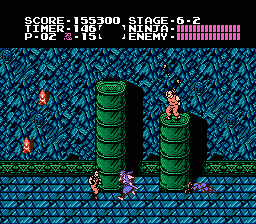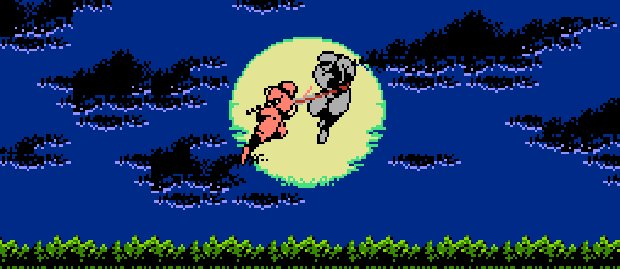This post has not been edited by the GamesBeat staff. Opinions by GamesBeat community writers do not necessarily reflect those of the staff.
“Ryu, I’m on my way to a life or death duel. If it’s destiny that I don’t return, you are to take the Dragon Sword of the Hayabusa family and go to America and see the archaeologist, Walter Smith.
“Ryu, be always brave.”
I remember the first time I saw those lines, how I felt when I saw the words of Ken Hayabusa to his son as the music played slowly and sadly in the background. Ken Hayabusa wasn’t my father — my dad was in the next room watching television, alive and well in the real world — but I was armed with my controller and a firm resolve to find the poor bastard who took Ryu’s father away from him.
I was ten.
Revenge on Jaquio and Foster didn’t come until later … much, much later. I didn’t beat Ninja Gaiden until my adulthood, when I was old enough to understand and appreciate the beauty of the storytelling intertwined with one of the most difficult platformers in the history of the little gray box. The NES Ninja Gaiden games hold a special place in my heart. Story is a big part of those games, and the characters are what really makes the Ninja Gaiden series shine.
With villains like Ashtar and Jaquio — really, really bad guys that you want to strangle — and cool supporting characters like Robert T.S. — whom I felt should have been a playable character because he was so awesome — Ninja Gaiden’s compelling story makes you care about what happens to its cast.
The Ninja Gaiden that I grew up with, however, is very different from the one my kids know.
The new Ninja Gaiden series is not the beloved Ninja Gaiden of my youth. Ultra-violence, a flimsy story, and well-endowed women are now the standard. Back then, I highly doubt that Itagaki’s brainchild would have been given Nintendo’s hallowed Seal of Approval. Yet, for all of its differences, there’s something very familiar about the new games. The lightning-fast combat takes me back to the days of when I had better manual dexterity and fewer buttons on a controller to manage.

I’m unabashedly an apostle of the 8-bit era, but passing the controller around with my kids, battling it out with the Black Spider Clan in the streets of Tairon was the most fun I’ve had in a long time.
 While dodging exploding shuriken and cursing silently under my breath after I died for the umpteenth time, I had an epiphany: Team Ninja got the formula right. They managed to capture the soul of the 8-bit Ninja Gaiden games while creating something utterly tangential to the source material. The original Ninja Gaiden’s stage 6-2 is probably one of the most grueling levels in the history of action-platforming. That same feeling is present through the entirety of Ninja Gaiden Sigma 1 and 2 (author’s note: I’ve never played Ninja Gaiden 3: Razor’s Edge, but it’s one I want to try). The new games are damn hard, but you feel like a champ — just like playing through the NES games with no continues. Except that you’ll probably continue (and swear) a lot.
While dodging exploding shuriken and cursing silently under my breath after I died for the umpteenth time, I had an epiphany: Team Ninja got the formula right. They managed to capture the soul of the 8-bit Ninja Gaiden games while creating something utterly tangential to the source material. The original Ninja Gaiden’s stage 6-2 is probably one of the most grueling levels in the history of action-platforming. That same feeling is present through the entirety of Ninja Gaiden Sigma 1 and 2 (author’s note: I’ve never played Ninja Gaiden 3: Razor’s Edge, but it’s one I want to try). The new games are damn hard, but you feel like a champ — just like playing through the NES games with no continues. Except that you’ll probably continue (and swear) a lot.
They don’t make the classics like they used to. Maybe that’s not such a bad thing. There are many developers that make games that have the heart of the old school experience. Games like Punch-Out!! and Metroid Prime are updates to old franchises, but the feeling of nostalgia is there. You can feel it. You’re sitting cross-legged in front of the TV for hours with your friends, fighting off space pirates on the planet Zebes … just like the old days. Now I get to share that same experience with my kids.
We always fight over who goes next. Just like the old days. I love it.

